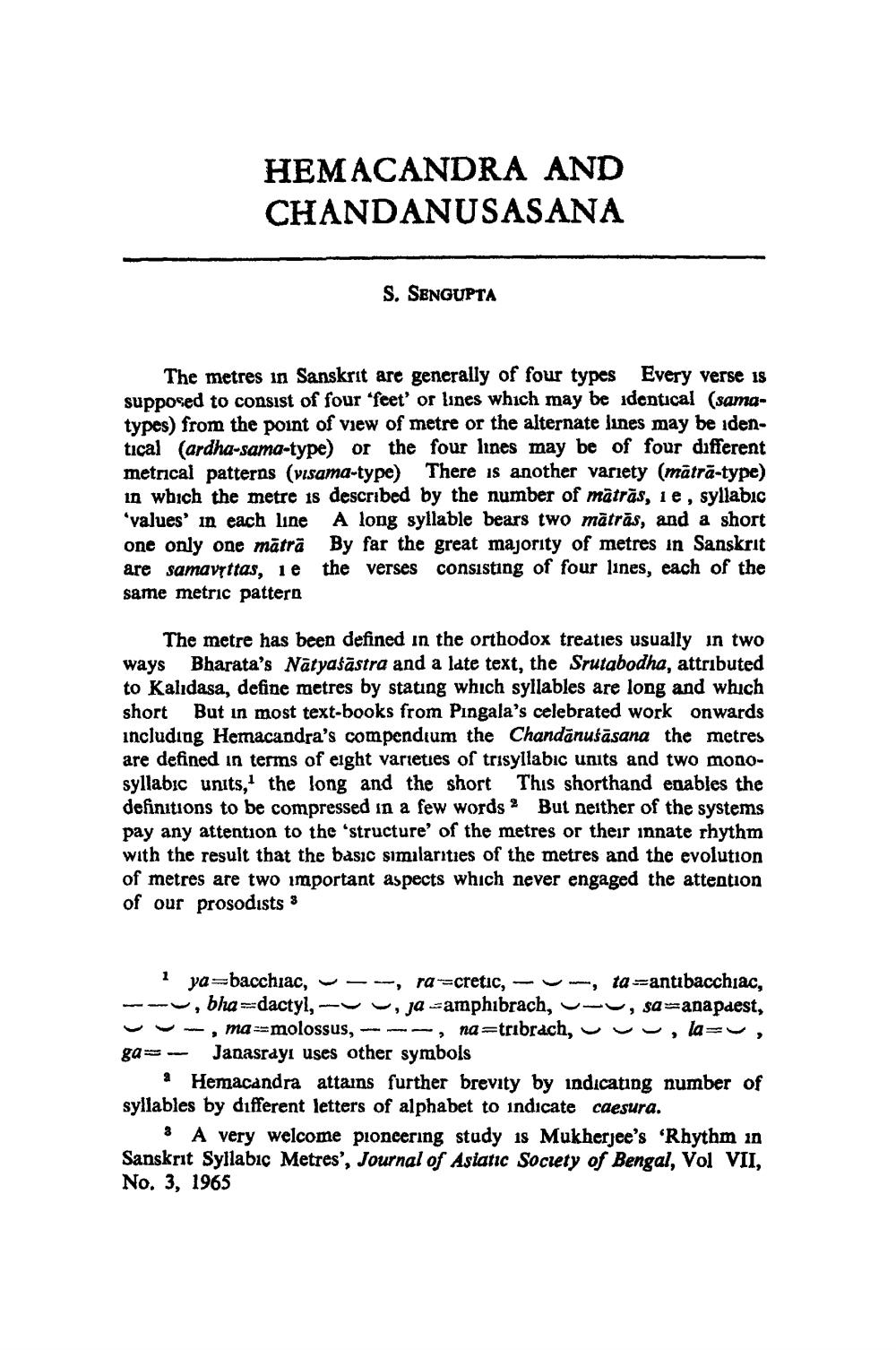________________
HEMACANDRA AND CHANDANUSASANA
S. SENGUPTA
The metres in Sanskrit are generally of four types Every verse is supposed to consist of four 'feet' or lines which may be identical (samatypes) from the point of view of metre or the alternate lines may be identical (ardha-sama-type) or the four lines may be of four different metrical patterns (visama-type) There is another variety (mâtrā-type) in which the metre is described by the number of mâtrās, ie, syllabic 'values in each line A long syllable bears two mātrās, and a short one only one mātrā By far the great majority of metres in Sanskrit are samavíttas, ie the verses consisting of four lines, each of the same metric pattern
abodha, attributed
most text-boot. aung which syllable
The metre has been defined in the orthodox treaties usually in two ways Bharata's Nātyafāstra and a late text, the Srutabodha, attributed to Kalidasa, define metres by stating which syllables are long and which short but in most text-books from Pingala's celebrated work onwards including Hemacandra's compendium the Chandanušāsana the metres are defined in terms of eight varieties of trisyllabic units and two monosyllabic units, the long and the short This shorthand enables the definitions to be compressed in a few words 2 But neither of the systems pay any attention to the 'structure of the metres or their innate rhythm with the result that the basic similarities of the metres and the evolution of metres are two important aspects which never engaged the attention of our prosodists 3
1 ya=bacchiac, --, ra=cretic, - U-, ta=antibacchiac, O , bha=dactyl, - , ja -amphibrach, -U, sarana paest, -, ma=molossus, -- -, na=trıbrach,
, la= , ga=-- Janasrayı uses other symbols
a Hemacandra attains further brevity by indicating number of syllables by different letters of alphabet to indicate caesura.
8 A very welcome pioneering study is Mukherjee's 'Rhythm in Sanskrit Syllabic Metres', Journal of Asiatic Society of Bengal, Vol VII, No. 3, 1965




